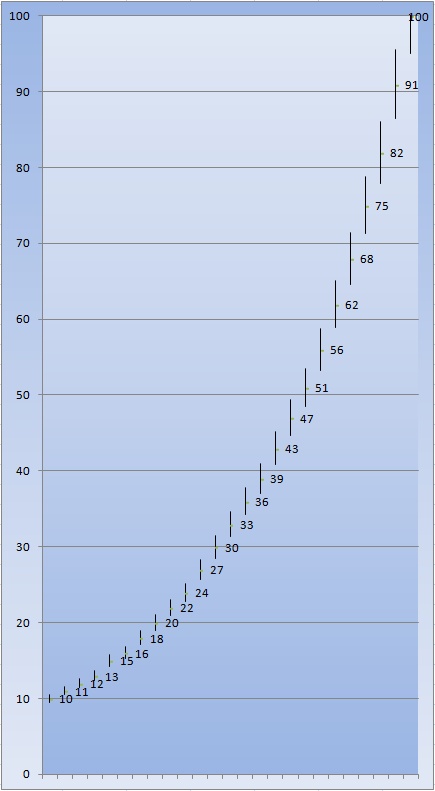A quick look at the values of standard 5% resistors is puzzling. Instead of a nice, logical progression of values (say, 1.0k; 1.1k; 1.2k… 1.9k; 2.0k), the values seem to follow some arbitrary scheme, possibly chosen by a numerologist rather than an engineer.
There’s a reason for this, though — the standard 5% resistor values are chosen based on a specific set of “preferred numbers.” This specific sequence not only ensures continuous coverage of the whole order-of-magnitude sequence (1.0 to 9.9 times a power of ten), but helps cut down on manufacturing defects, as well. Here’s how.
The “E24 series” is chosen so that every possible value, from 1.0 to 9.9999, falls within 5% of one (or two) of the values in the series. This way, any possible desired resistor value can be substituted by a resistor whose value is within the 5% margin of error. More interestingly, resistors can be manufactured with no control whatsoever over the resistance — and as long as their resistance falls somewhere on the scale, they can be binned into a group. A resistor tests out as 992 ohms? Into the 1k bin it goes. Another is 450 ohms? Good enough to go in the 470 ohm bin. All possible values fall into one (or sometimes two) possible bins.
It only seems weird until you think about it.


